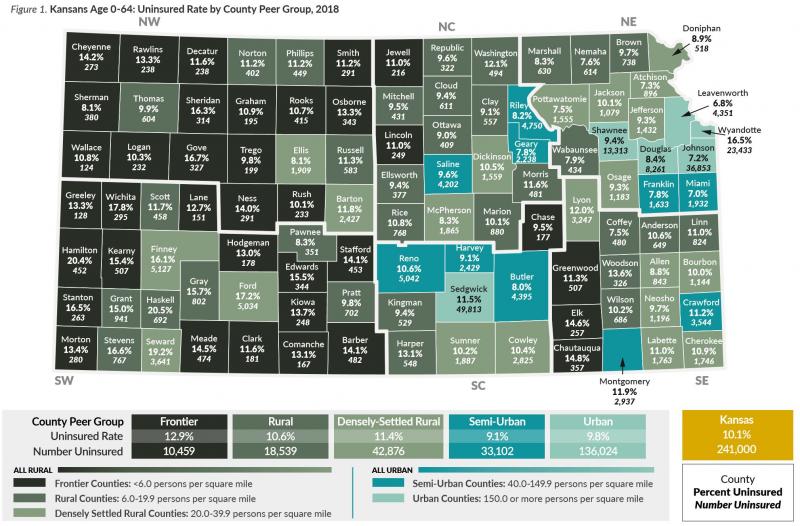Introduction
In 2018, uninsured rates in Kansas varied widely by county, region and population density. Understanding the health insurance landscape in Kansas prior to COVID-19 could help policymakers as they work to mitigate the health and economic consequences of the pandemic.
To shed light on variations in insurance coverage, the Kansas Health Institute has produced a series of fact sheets which examines the most recent county-level health insurance estimates from the U.S. Census Bureau. The data show that less-densely populated counties in Western Kansas generally had the highest uninsured rates in 2018, but the most populous counties, which tend to be in Northeast Kansas, had the highest numbers of uninsured Kansans.
Recognizing the differences between areas with higher rates and higher numbers of uninsured Kansans can help policymakers design distinct approaches to improving health insurance coverage across the state. For example, activities that can reach many uninsured Kansans in larger population centers might not be as effective in Western Kansas counties, which tend to have higher uninsured rates.
Access these publications in the Documents & Downloads section.
